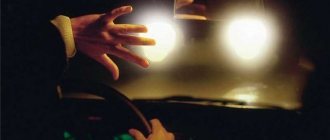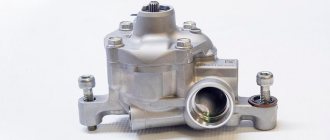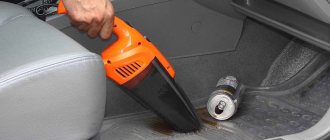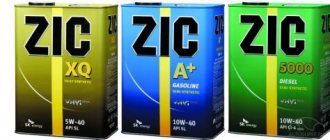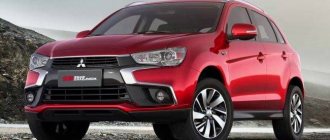Safety on the road depends to a large extent on the quality of the driver's vision. Special car glasses make driving comfortable and safe in any weather, so don’t neglect these items. Let's talk further about how to choose the right glasses for a driver.
If the driver's vision is satisfactory, then ordinary sun protection accessories are quite suitable. If vision accuracy is impaired, for example, myopia, astigmatism or farsightedness, special models with diopters are needed.
How glasses for drivers work
Driving glasses are reliable protection for the driver's eyes in any situation.
Depending on the operating conditions, they can be divided into types:
- sun protection;
- with polarizing filter;
- anti-lights;
- for night driving.
Based on the purpose of the glasses, their color and the presence of special filters will change. Most glasses fall into the general use category. The manufacturer took care of the presence of a polarizing filter and anti-reflective coating. The glasses filter out the blue-violet and green light spectrum and make the image clearer and more contrasty.
Thanks to colored lenses, the glasses have proven to be highly effective at different times of the day. The principle of operation of the protective equipment is to reflect the negative part of ultraviolet radiation, which allows you to preserve your vision.
Also, a special coating on the lenses eliminates glare, reflections, splitting of objects and the appearance of light halos. With glasses, the visible picture seems clear, bright, and natural. The likelihood of accidents with a protective accessory is lower than without it.
- ➤ For what purposes is an eye massager used?
- ➤ How to choose reading glasses!
Choosing the right lenses
When choosing, you should pay special attention to the lenses of your glasses. It would be good if they were of high quality and ideally suited to their owner. They are:
- From glass.
- Made of plastic.
Both of these materials can be of excellent quality, so it is not recommended to give preference to a specific variety. Products with plastic lenses have a high level of safety; in the event of a collision or emergency, there is no risk that the products will cause injury to you. Main types of coatings.
- Anti-glare coating. Glasses are popular among drivers. Some choose tinted models. Such products are offered by Autoenjoy, EX.
- Covering designed for driving in low light conditions. Pay attention to the products of Road&Sport and Vitol.
- Anti-reflex coating. It serves to protect against glare and prevents exposure to solar radiation. They are offered by companies such as YATO, MIPOY.
Polarized types of glasses
Inexperienced users assume that polarized glasses are just regular sunglasses. But that's not true. The main difference between this accessory is the presence of a polarizing coating or filter. It has a multilayer structure, inside of which there is a special film.
The purpose of the film is to separate the sun's rays passing through the glasses into their components. Beams with vertical polarization are passed through, the rest are eliminated.
From a scientific point of view, polarization occurs only in transverse waves, where the oscillations occur perpendicular to the movement of the radiation itself.
In glasses with a filter, polarized reflected radiation will be filtered out. This means that reflected radiation from passing vehicles, wet asphalt or other objects will be cut off.
The polarizing effect allows you to achieve a clearer image. On average, the range of lenses with polarized coating is about 20 meters. Lenses differ in the type of material used to make them.
Plastic lenses are considered safer. It should also be noted that lenses with a polarized layer may vary in color. In production there are brown, amber, gray, pink, yellow and even blue glasses.
It should be noted that glasses with polarized coating provide drivers with a number of advantages:
- significant improvement in the quality of vision;
- reducing accident rates, increasing driving comfort;
- constructing an image with clear contours;
- protection of the organs of vision from ultraviolet radiation.
- ➤ At what time do children’s eyes change color and when does the color become permanent? ?
- ➤ How to properly put drops into a child’s eyes!
Designed for night driving
Night driving glasses differ from regular driving glasses in that they should provide the driver with a better image during twilight or when driving in the dark. This means that they must protect from the bright light of oncoming traffic headlights, reflected glare from various objects, and road markings.
In order for glasses to be safe, they must have two properties:
- have a polarizing coating;
- have an anti-reflective coating.
Lenses for night driving glasses are most often made in yellow. Different manufacturers have a color spectrum from yellow to brown, as well as red. This lens color with a polarizing filter provides the most reliable protection for the driver's vision.
The combination of an anti-glare effect and a polarizing layer makes it possible to remove the splitting of objects, reduce light halos, and make the picture contrasty and clear.
The yellow lens helps create the effect of the sun in the dark or twilight. This reduces eye strain and partially relieves fatigue.
When choosing glasses for night driving, it is important to give preference to trusted manufacturers. When purchasing, you should check the quality of the polarization effect, try on the frames and evaluate how comfortable they are. Any driving glasses should not cause discomfort.
It should be noted that at night or at dusk, the quality of the driver’s vision decreases. If you have problems, even slight myopia, you need to choose corrective glasses. They will correct your vision and make it sharp. Corrective glasses also have an anti-reflective coating and come with tinted lenses.
- ➤ What are the pros and cons of toric lenses?
- ➤ What is the necessary care for eyelash extensions at home!
https://medglaza.ru/voprosy/ochki/poljarizacionnye-voditelja.html
Anti-headlight glasses
Anti-headlights are made of durable plastic, polymer materials or glass. Thanks to their design features, they protect from sunlight, and also guarantee the absence of glare and a comfortable ride in the dark.
The price of anti-headlights is not much higher than simple sun-protection ones. In addition, they have excellent hypoallergenic properties. For long trips, such products have numerous advantages over simple glasses:
- The main advantage of such accessories is to protect the driver’s eyes from the headlights of cars ahead.
- Anti-headlight glasses are completely safe for health, do not cause irritation and fit comfortably.
- Anti-headlights have a high reflectivity.
- They have a high light transmittance. Therefore, even at dusk the driver will be able to drive comfortably.
How to choose sun protection models
Car enthusiasts who are looking for high-quality vision protection while driving are faced with the concept of sunglasses. They are designed for daytime driving.
The most dangerous period, when the sun dazzles your eyes, begins at 11 o'clock in the afternoon and lasts until 5-6 in the evening. The sun at sunset can also cause trouble.
For this reason, driver's sunglasses should not only reliably protect the eyes from ultraviolet radiation, but also prevent the eyes from going blind in the bright sun. Most often, such glasses are made in dark brown, amber or yellow tones.
These colors allow you to filter out the violet component of the light spectrum as efficiently as possible. Consequently, glare protection will be more reliable.
To choose driving sunglasses, you should carefully study the UV protection parameter. If UV-400 is indicated, then such glasses will protect the eyes by 99-100%. If the marking says UV-380, then the protection will be only 95%. So, the lower the indicator, the worse the UV protection will be.
In some cases, the degree of transmission of ultraviolet rays can be assessed by the degree of darkening of the lens. Light ones transmit more rays, dark ones - less. The manufacturer indicates the degree of protection in the documentation or makes a notch on the frame of the glasses.
Lens material: glass or plastic
Which driving glasses should I choose – glass or plastic? It is better to opt for plastic. It is lighter and, most importantly, less traumatic than glass.
If a plastic lens breaks, it does not create small fragments that could damage your eyes. Plastic is relatively easy to scratch, but to protect against abrasive influences, lenses can be supplemented with a special coating.
And you should always keep your lenses clean. Dust, stains left by your fingers - all this not only contributes to the fact that you perceive the world insufficiently clearly, but also causes your eyes to strain, leads to increased fatigue, and prevents you from accurately determining the distance to other objects, for example, to the side of the road, a traffic light or the person driving in front of you. you cars.
Anti-glare glasses and their features
Anti-glare glasses are a type of driving glasses. They have a special anti-reflective coating. Its main task is to protect your eyes from glare that appears on the windshield, from water surfaces and other objects.
They also help relax your eyes while driving. This effect preserves visual acuity and reaction speed during long driving.
Every driver needs anti-glare glasses. They work effectively when the instrument panel is reflected on the windshield, when it becomes foggy, dusty, or other defects appear. Thanks to glasses, the eyes recover faster. Most visual distortions are simply filtered out by the lens. The final image is clearer and of higher quality.
Anti-glare glasses are most often produced with a polarized coating. They may differ in the color scheme of the lens. Each color is used in different situations. So, anti-glare glasses with black or dark gray lenses will best protect your eyes from ultraviolet radiation.
Yellow lenses are suitable for both day and night use. They best protect against bright flashes of light, glare on the road, and headlights. Brown lenses are similar in their effect to yellow ones, but they help to further relax the eyes and create the effect of the sun.
Anti-reflective transparent lenses are available. Most often, they are intended for people with vision problems; corrective glasses are made with a mandatory anti-reflective coating.
Anti-glare glasses have proven themselves well not only among drivers, but also among athletes and travelers. They are actively used by fans of winter resorts and skiing.
Types of driving glasses
Driving glasses are divided into two types:
- Sun protection with anti-reflex coating inside.
- Special for driving day and night.
Yellow, orange and red lenses are designed for darkness or bad weather. Such lenses do not transmit blue colors, and the light from the headlights of oncoming cars does not affect the driver’s eyes so intensely.
Photochromic effect
Driver glasses come in the following types:
- Sun protection.
- Polarized.
- Photochromic.
- Corrective.
- Anti-lights.
We will analyze each type separately so that you can have an idea of which models are best to choose for driving a car.
Sunglasses
Sun protection accessories for the driver are the most common. Some people mistakenly think that they are enough to feel comfortable on the road. This is far from true. This type has the most popular colors:
- Grey. The most common and neutral. It does not change color, but only muffles sunlight, reducing brightness and glare.
- Orange and yellow. These colors increase contrast during fog or haze. In winter, they can distort the rendering of colors.
- Brown and amber. Improves vision in cloudy weather.
- Red and pink. They help cut off the blue spectrum and do not cause fatigue even when worn for a long time.
It is worth noting that conventional light filters do not block glare, so the transmission of driving glasses does not always match the standard.
That is why it is recommended to choose only high quality products.
Polarized anti-glare glasses
Polarized anti-glare models are equipped with an additional function. They allow you to reduce the intensity of light, block the glare of the sun and completely eliminate the glare effect.
However, this type also has negative sides. They can only be used during the daytime, because in poor lighting they greatly impair visibility, and in cloudy weather they are completely useless. Therefore, glasses with polarized lenses are not recommended for night wear.
Photochromic glasses
If you wear glasses all the time, then products with photochromic lenses are a great choice. They darken in sunny weather with different intensities. In other words, these are the “chameleons” familiar to many. When it's cloudy outside, they become transparent.
Previously, photochromes darkened only under the influence of sunlight, which did not enter the car interior. Now they have begun to produce glasses that also work in the salon. There are also lenses with a polarizing effect.
Corrective glasses
Corrective glasses for drivers are medical, that is, they are recommended for various visual impairments. In this case, it is better to choose lenses with anti-reflective coating. This allows you to increase the contrast of the image, reduce glare from the wet road, oncoming headlights, and street lights. This is especially important when driving at night.
Recently, special sun protection attachments have appeared. They are characterized by efficiency, compactness, ease of wearing and low cost. The driver simply needs to attach these clips to his main glasses so that the corrective models become sunglasses.
Polaroid or anti-lights
You can find different manufacturers of driving glasses on the market. Polaroid brand models performed well. They are the most common and versatile. The models fit equally well on both women's and men's faces.
Most Polaroid driving glasses are classified as sunglasses. They are distinguished by high quality workmanship and materials. These glasses do not have abrasions, scratches or other defects that appear during use. They have high quality lenses. During assembly, the glass is precisely adjusted to the frame, so that there are no gaps.
Polaroid lenses themselves are made from modern materials. The image in them is distinguished by high clarity and brightness. Thanks to the polarizing layer, drivers see even better than without glasses.
Manufacturers note that with polaroid glasses you can look at bright light sources without fear. At the same time, there is no natural desire to close your eyes. Consequently, drivers' eyes will be less tired. Among the advantages of polaroid glasses is high safety. The lenses are shock resistant. They will not break even in the event of an accident.
Anti-headlight glasses belong to the category of more universal models. They performed best when driving in the evening or at night, during snowfalls, fog and other precipitation. Based on this, we can highlight the main advantage of anti-headlight glasses - creating visual comfort when driving.
The most common color for making anti-lights is yellow or shades of brown. This choice is due to the peculiarities of cutting off a certain part of the spectrum to achieve an optimal image.
Anti-headlight glasses help protect your eyes from ultraviolet radiation. The polarizing coating applied to them allows the accessory to be used not only at night, but also during the day.
Many drivers choose anti-headlight glasses, as they not only make driving better, but also create a solar effect when driving in the dark, they reduce eye strain during prolonged use of vehicles, and are a reliable barrier against oncoming headlights.
If we talk about comparing polaroid and anti-headlights, it is quite difficult to choose. Polaroid glasses are found in the cheaper and more accessible segment, but anti-headlights often have higher performance indicators.
Properties and differences of anti-headlight glasses
Let's take a closer look at anti-headlight glasses, which are popular among car enthusiasts. How to distinguish them from ordinary sunscreens? There are several criteria to answer this question:
- Color. Brown and gray colors provide excellent protection from the sun's rays. Orange and yellow are suitable for night driving. As a rule, models with yellow lenses are popular.
- Polarization. Anti-headlight lenses are coated with a special coating that protects against the negative effects of sunlight. It is very easy to check your glasses for polarization properties: you can look at other similar accessories while wearing them, then turn your head - the glasses will seem dark to you.
- Anti-scratch coating. When purchasing, make sure that the lenses have a special anti-scratch coating applied to them. To do this, lightly scratch the surface; if marks remain, then you should not take such driving glasses.
Finding the best option
In order to determine what type of “second eye” will be ideal for you, it is worth visiting specialized stores or opticians and trying on several options. You can also get specialist advice. However, it is necessary to remember that even the most expensive models for drivers will not be able to protect you in emergency situations. Therefore, you should follow the rules of the road and remain extremely attentive while driving.
Features of yellow lenses
Most often, driver's glasses can be found with yellow lenses. Manufacturers use a wide range from rich yellow to dark brown. This is due to certain advantages of lenses.
Manufacturers use two different technologies to make yellow glass. In the first, a light filter is installed on the glass, which transmits only a narrow range of yellow waves. This makes it possible to see all objects in different shades of yellow. Unfortunately, such glasses have not found much applicability due to high losses in color rendering.
The second technology uses the principle of color addition. The main task is to remove the blue component from the white component, then the end result will become yellow. Consequently, a coating is applied to the glasses that reflects the light wave of the blue spectrum.
Thanks to the presence of a protective filter on the glass, glasses with yellow lenses increase the overall contrast of the image and make it clear. The illumination against the general background decreases. All this leads to a reduction in eye strain.
Another advantage of yellow lenses is the restoration of the yellow component of light during twilight or precipitation. Thanks to this, the eye sees the entire color gamut more fully, therefore, the sharpness of vision increases.
In yellow lenses obtained by the color addition method, there is also color loss, but it is not significant. On the contrary, thanks to their action, the blue-white halo around objects is suppressed, which makes their outline smoother and clearer.
Yellow lenses have performed well when used at night to protect the eyes from glare from incandescent lamps or halogen flashlights. This is due to the fact that yellow glass partially or completely filters out the blue component.
Despite the significant increase in driving comfort with yellow glasses, it is not recommended to use them for constant wear. This is due to the color loss they cause. When wearing such glasses for a long time, the spatial sense and correct perception of the original color without glasses may be impaired.
Choosing a frame
First of all, it is worth remembering the fact that there are no ideal glasses suitable for all occasions. Therefore, you will have to take care of buying several pairs. Not only the lenses, but also the frames deserve special attention:
- When purchasing a product, make sure that you are comfortable in it. Optics should not cause discomfort. The product is selected correctly if it does not put pressure on the temples and bridge of the nose and fits well;
- When choosing glasses, remember that they are “helpers” and not “pests”. If the product slides down onto the tip of your nose or distracts you from the road, refuse to buy them. Choose a more convenient copy;
- Most drivers prefer optics equipped with thin and light frames;
- It is advisable to have a nose pad that matches the size and shape of the nose. In this case, there is no risk that the glasses will slip off at the wrong moment. Rubber pads are used to decorate the ends of the arms;
- The temples are attached to the frame at the top or bottom, unlike conventional optics where they are attached in the middle. This feature significantly expands the viewing angle.
Sports models are considered the ideal option. Return to contents
Who should use it
Driving glasses are not just an accessory, they are a necessary item for those who spend a long time behind the wheel. There are a number of people who are recommended to use driving glasses.
First of all, they should be for professional drivers who spend all day behind the wheel. Special glasses will protect your eyes from the bright daytime sun, from glare, reduce eye strain, and in the dark or twilight will make the visible image clearer and sharper. Professional drivers should be especially careful when choosing glasses.
The second category includes those who experience visual impairment in the dark or twilight, who experience a strong glare effect from bright oncoming light or glare. In this case, wearing glasses will make driving safer.
Driving glasses are also indicated for the prevention of Scandinavian syndrome. It occurs in situations where the weather is gray and uniform in tone. Experts recommend choosing yellow or brown shades of glasses, as they create the effect of the sun. As a result, eye strain is reduced, mood improves, and depression is prevented.
Types of driving glasses
There are several options, each of which performs its own functions.
Anti-glare
A special lens coating blocks the glare of the sun, which distorts the image when it hits the retina . Because of this negative impact, the eyes quickly get tired. Thanks to such models, the image becomes high-quality and vision does not deteriorate.
For night driving
Yellow windows are used here to dim the light of oncoming vehicles . Special lenses minimize glare. The glasses are ideal for drivers who travel at night. This type of optics improves image quality in fog.
Anti-lights
Glass, polymer or plastic are used in the manufacture of these models. Anti-headlights increase the contrast of the picture and dim the light of cars moving towards you . Yellow lenses reduce eye strain. The accessory should be worn at night and in poor visibility.
Polarizing
Thanks to a special coating, these models reduce color saturation and protect against light glare . Glasses reduce eye fatigue, allow you to control the situation on the road, increase image clarity, and block oncoming light and ultraviolet radiation. It is better not to use at night.
Photochromic
An accessory of this type is similar to ordinary glasses that correct vision. Photochromic lenses become dark when exposed to sunlight . However, many drivers note the low effectiveness of such accessories during car trips.
Basic selection rules
Driving glasses are distinguished by a wide range and variety. Their main task is to make driving as safe and comfortable as possible.
Therefore, when choosing, it is worth considering a number of indicators.
- Comfort. The first most important rule for glasses is ease of use. The frame should fit clearly, it should not slide off or put too much pressure. Nose pads and earhooks should not cause any discomfort. It is important that they are rubberized. The presence of a rubber insert will prevent them from slipping.
- Safety. Glasses must be safe for drivers in any situation. This means that during sharp turns of the head they should not change their position. In the event of an accident, they should not break. For manufacturing, preference is given to modern plastic, which has a wear-resistant coating. Scratches do not form on such glasses, therefore, the view is always good.
- Maximum wide viewing angle. Glasses should not hide the image from the driver. This means no to too broad forms. The earhooks should only be attached to the top or bottom of the frame. This achieves a better viewing angle.
- Properly selected lenses. Modern technologies offer a wide variety of lenses. They can be made using anti-reflective, polarizing, photochromic technology. Some glasses have an anti-reflective effect. Each option is used in its own situation. The yellow and brown range of lenses will be indispensable in bad weather and twilight, red and brown shades are better suited for protection from bright daylight, photochromic and polarization technologies are more universal.
5 / 5 ( 10 votes)
Frame features
When choosing glasses for a driver, a good fit of the frame is of particular importance. If the model always slides onto its nose or slides off when turning its head, this is bad. Therefore it is important that:
- the frame fit exactly;
- had nose pads providing good fixation.
Choose frames that don't slip or move when you tilt your head.
It is better to prefer thin frames with narrow temples and an “elongated”, sporty design of light openings. These glasses for the driver provide good lateral visibility and do not limit peripheral vision.
Opt for simple, functional frames and focus less on what's in fashion today. Comfort and complete control over the road are much more important than how you look.
